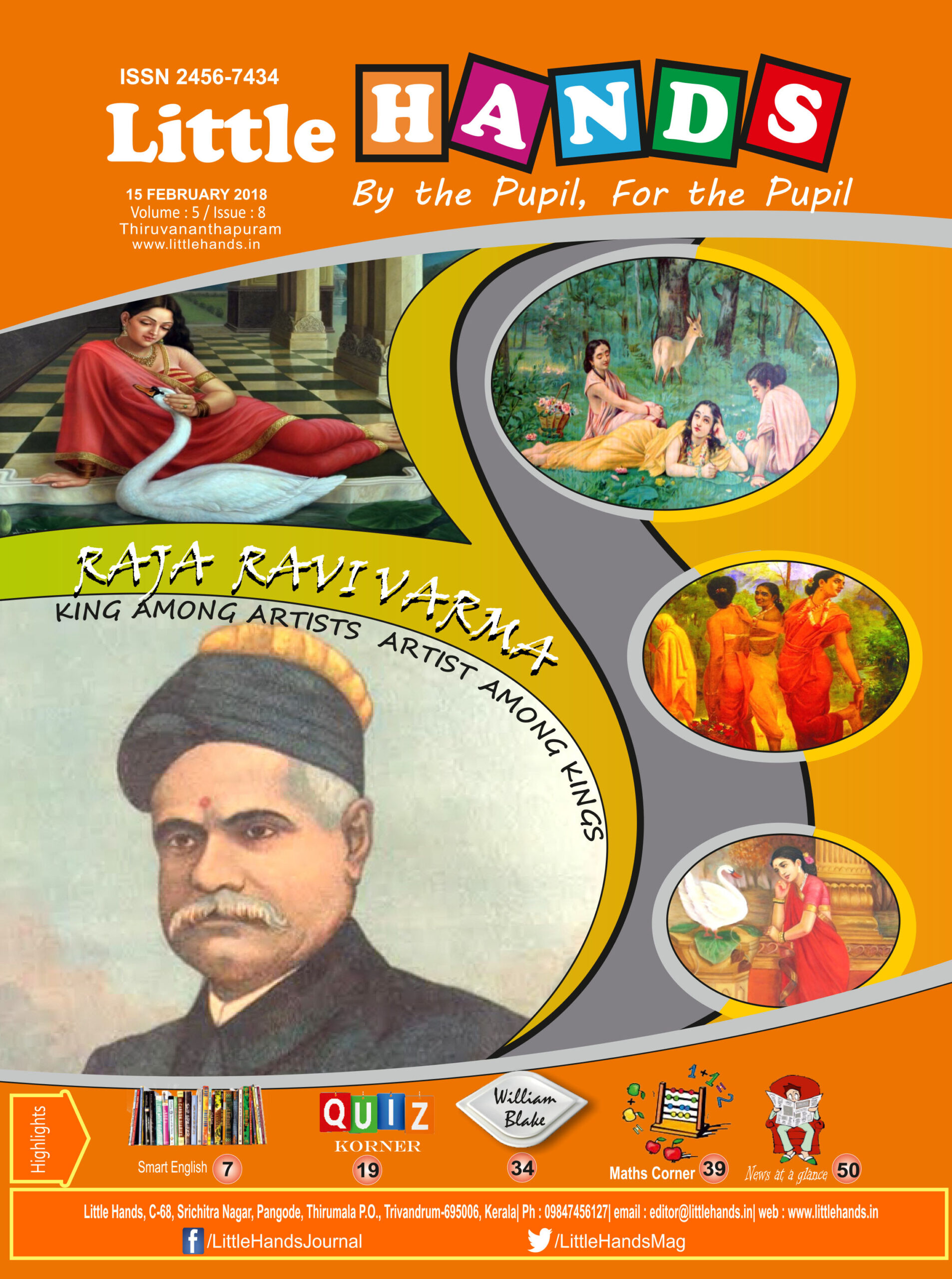One of the greatest painters of India who was hailed the world over, Raja Ravi Varma enjoys pride of place among the illustrious sons of Kerala. Significantly, most of the portraits of gods and goddess that adorn the Hindu houses are his creations. So also are the memorable figures and scenes from our Puranas and classics, adding to his wide popularity.
Ravi Varma was born in the royal palace of Kilimanoor on 29 April 1848. He had two brothers and a sister. Raja Ravi Varma, his younger brother, joined him later assisting his works almost throughout his life. Noticing the inborn artistic task of Ravi Varma, his parents sent him to study under the patronage of Aayilyam Thirunal, the Maharaja of Travancore. This helped him a lot to groom his talents in a proper way.
Ravi Varma was just 14 years old when he learned the basic lessons of water colour painting from the palace tutor Ramaswamy Naidu. Subsequently he was trained in oil painting by Theodor Jenson, a Dutch artist. These two masters were able to instill a deep sense and sensibility in the boy at a very formative stage.
Meanwhile, Ravi Varma began to paint rather profusely and before long his canvases were exhibited far and wide, gaining a lot of fans and admirers in the process. His paintings were presented at a prominent exhibition in Vienna which fetched him a covetable award.
He sent his paintings to Chicago where he won three gold awards from the World’s Columbian Exposition held in the year 1893. It merits mention that his excellent work was appreciated by the British administrator Edgar Thurston who was responsible for taking Varma’s paintings overseas.
When once the paintings reached foreign shores, they spoke for themselves. Such was their inherent beauty and brilliance which made him a much-admired artist. Varma made it a point to travel all over India hoping to find the right objects for his art. He was particulary fascinated by the charm and beauty of South Indian women.
It is an open secret that he often depicted his own close relatives who included his daughter Mahaprabha . He has also portrayed other royal women who were, in fact, transformed as charming goddesses and heroines. In fact, a major criticism raised against his portraits was that they were all common south Indian women.
The then Dewan of Travancore, Sir T. Madhava Rao was an ardent admirer of Ravi Varma who was impressed by lithographic printing, and suggested the brothers to start such a press. Accordingly, they established one in Bombay which was subsequently shifted to a place near Lonavala. The press produced many paintings of gods and goddesses, all in most colourful attire.
Perhaps the most popular among Ravi Varma’s paintings is Shakuntala (along with the Swan), the heroine of Kalidasa’s ‘Abhijnana Shakuntalam’ . If today’s generation has a certain knowledge of our heros and heroines, the credit should go to Varma whose portrait gallery has several characters that embellish the classics. He has also depicted a sizeable number ordinary people.
Among Ravi Varma’s illustrious masterpieces are
‘A family of Beggars’ that represents the sorry state of India’s poor folk,a ‘Lady Playing Swarbat’, a musical instrument. ‘A woman anxiously waiting for her lover’ is yet another exquisite creation.
The Kerala Government has instituted an award in his name, the Raja Ravi Varma Puraskara to be presented to gifted individuals in the field of art. There is also a Ravi Varma College of Fine Arts in Mavelikara district. Ranjit Desai has written a novel on the fabulous life and times of Ravi Varma which has several memorable episodes like the one that describes the artist’s meeting with Swami Vivekananda. Aptly It is named ‘A Meeting Like Never Before.’

